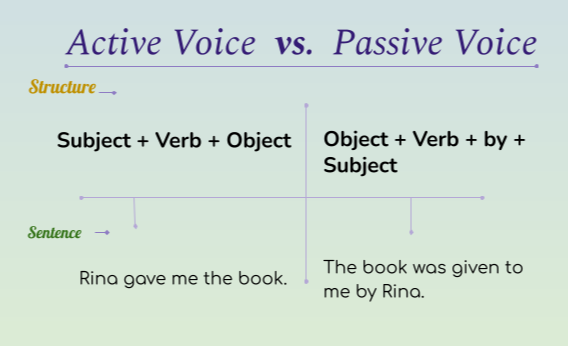When it comes to writing, understanding the difference between active and passive voice is crucial. Both styles of writing have their own strengths and weaknesses, and knowing when to use each can greatly enhance the clarity and effectiveness of your writing.
Active voice is when the subject of the sentence performs the action, while passive voice is when the subject of the sentence receives the action. This distinction may seem subtle, but it can have a significant impact on how your writing is perceived by your audience.
Active and Passive Voice Difference
In active voice, the subject of the sentence is the one performing the action. For example, “The cat chased the mouse.” The subject “cat” is performing the action of chasing. Active voice is often preferred in writing because it is more direct and engaging for the reader.
On the other hand, passive voice is when the subject of the sentence is receiving the action. For example, “The mouse was chased by the cat.” In this sentence, the subject “mouse” is receiving the action of being chased. Passive voice is often used when the focus is on the action itself rather than the subject performing the action.
One common mistake writers make is using passive voice too frequently, which can make their writing seem dull and less engaging. By using active voice, writers can make their sentences more dynamic and compelling.
However, there are times when passive voice is appropriate, such as when the subject is unknown or when the focus should be on the action rather than the subject. It’s important to strike a balance between active and passive voice in your writing to keep your readers interested and engaged.
In conclusion, understanding the difference between active and passive voice is essential for effective writing. By using active voice, writers can create more engaging and dynamic sentences, while passive voice can be used strategically to shift the focus onto the action itself. Experiment with both styles of writing to find the right balance for your content.
